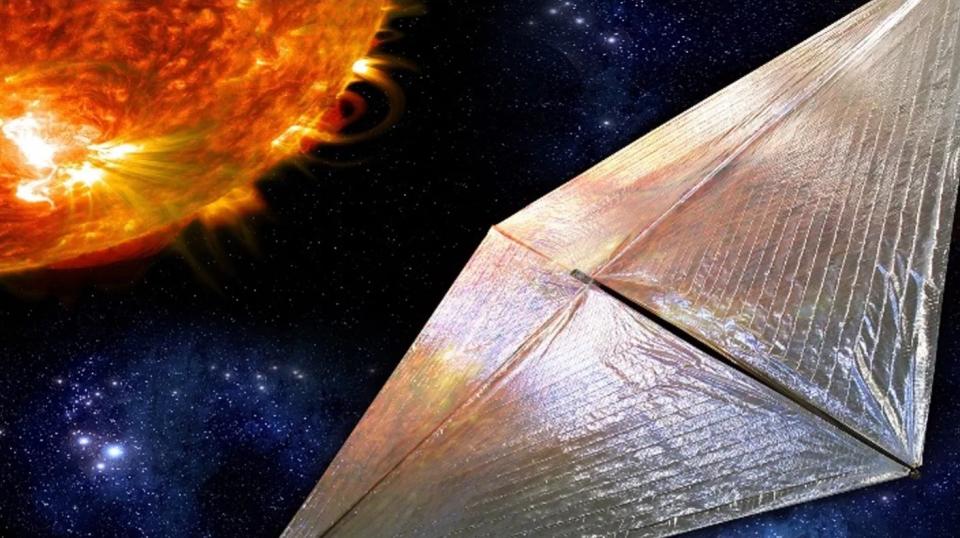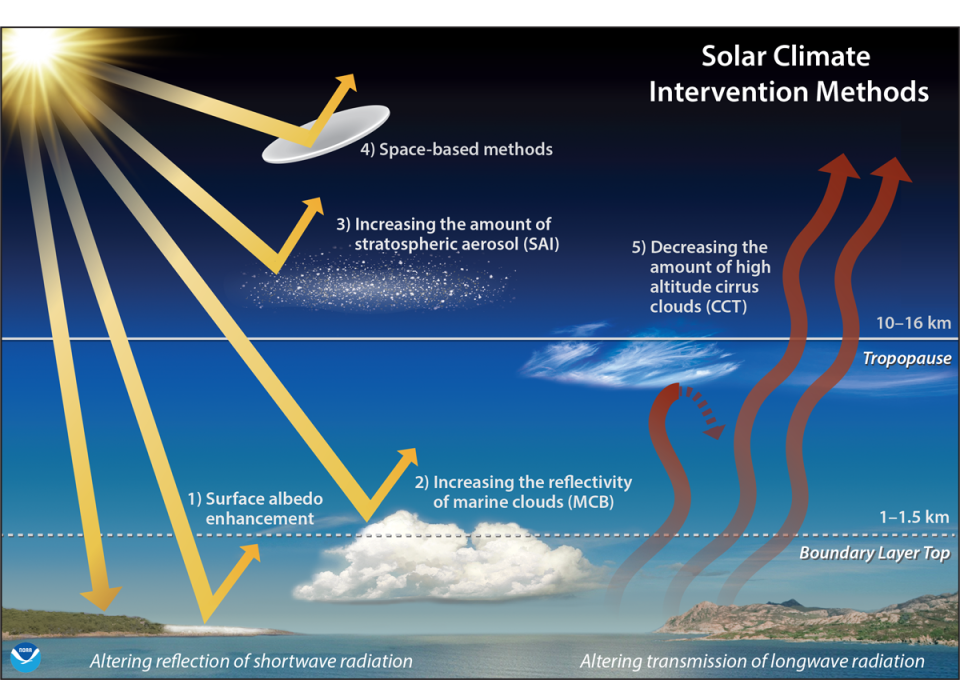A group has been formed to study and promote a space-based sunshade to help combat global climate change.
The idea has been discussed for years, but the Planetary Sunshade Foundation has produced articles supporting the concept and highlighting the practicality of the approach.
A planetary sunshade may be the best solution for solar radiation management, the foundation recommends, and should be considered an important part of global efforts to counter ongoing climate change on Earth.
Relating to: Experts confident 2023 will be ‘the hottest year in recorded history’
It’s a matter of degree
Addressing the worst effects of climate change can be based on three pillars: reducing emissions, removing carbon dioxide and managing solar radiation.
There is an international agreement that strives to prevent the Earth’s average temperature from rising more than 1.5 degrees Celsius (2.7 degrees Fahrenheit) above current averages. But the reality is that the lower the average temperature increase, the lower the climate impacts.
However, climate change researchers report that our planet could exceed 1.5°C in the next decade. Meanwhile, there is an increase in extreme weather events, sea level rise trends, widespread fires and melting glaciers.
These warning signs are accompanied by political pressure to counter the catastrophe of climate change.
habitable planet
Morgan Goodwin is the Executive Director of the Planetary Sunshade Foundation.
As for why the group is pursuing this initiative, Goodwin notes that current decarbonization strategies are necessary but inadequate for a livable planet.
Decarbonization is the reduction of carbon dioxide emissions through the use of low-carbon power sources to achieve lower emissions of greenhouse gases into the Earth’s atmosphere.
“To avoid the worst effects of climate change, the world needs to quickly stop burning fossil fuels, remove gigatons of carbon from the atmosphere, and limit incoming solar radiation,” Goodwin told Space.com. He said that among all the proposed methods to reduce solar radiation, sunshades have many advantages that merit investment in the concept.

Construction strategies
A sunshade will be placed at the Sun-Earth Lagrange-1 point, which is touted as a “mega structure” in space. Once in place, it could reduce radiative forcing (the trapping of heat in the atmosphere due to greenhouse gas emissions) by reflecting sunlight back into space.
The Foundation says it is possible to build a Planetary Sunshade by taking advantage of the first solar sail technology that has already flown. “Rapid technological progress in space launch systems has resulted in the cost of sending materials and people into space falling rapidly and changing the scope of what is possible.”
There are two possible awning construction strategies depending on the foundation.
“We are pursuing both options and think that if a planetary sunshade is built, the first stages of construction will be Earth-initiated architecture, while later stages will use space resources and in-space construction,” the group’s website explains.


Stay away from Mother Nature?
But there are also those who hold on tightly to the belief: “You shouldn’t make fun of Mother Nature!”
Goodwin responds by pointing out that humans are harming Mother Nature on a massive scale through state-approved and often state-sponsored industrial practices.
“Our survival as a civilization depends on our ability to intelligently and consciously change the way we interact with our planet,” Goodwin said.
Last year, the White House released a congressionally mandated report on geoengineering governance pathways, Goodwin said, adding that the document took a “small but solid step forward” toward creating a framework for greater investment in geoengineering research.


Report results
In June of this year, the White House Office of Science and Technology Policy released the Congressionally mandated report on solar radiation replacement.
As for the report’s implications, it warns that any potential comprehensive research program must include the social as well as scientific dimensions of solar radiation modification.
The document includes determining the climate and environmental impacts of implementing solar radiation modification; assessing potential social and ecological consequences; and the need to examine how research can be done collaboratively among international partners.
This report also acknowledges that research to date on the effects of solar radiation modification has been ad hoc and fragmented rather than the product of a comprehensive strategy. As a result, significant knowledge gaps and uncertainties remain in many critical areas.
Uncertainties, risks, difficulties
Earlier this year, the Global Commission for Managing Risks from Climate Overshoot (“Climate Overshoot Commission”) published its report.
This independent group of global leaders proposed a strategy to reduce risks if global warming targets are exceeded; this is a “climate overshoot” that exceeds the 1.5 °C threshold.
In the commission report, they brought up space-based reflectors; stratospheric aerosol injection, cirrus cloud thinning, and marine cloud brightening—all solar Radiation Modification (SRM) techniques.
“But SRM may perfectly counteract climate change and pose serious uncertainties, risks and management challenges,” the commission study said.
RELATED STORIES:
– NASA confirms summer 2023 will be Earth’s hottest summer on record
— Climate change has pushed Earth into ‘uncharted territory’: report
— NASA’s new ‘Greenhouse Gas Center’ tracks humanity’s contribution to climate change
“Governance gaps for SRM are the most acute,” the report said. “How can this be researched and assessed without moving away from fundamental reductions of greenhouse gas emissions? Who decides whether SRM should be undertaken and under what conditions? How can countries’ differences on this issue be resolved?”
Goodwin of the Planetary Sunshade Foundation concludes that this year will end as the warmest year ever recorded, displacing 2022 from 2021, which took that title. “As the pace and impacts of warming increase, more and more tactics and perspectives on global warming will be brought to the table.”
Whether a sun-deflecting, “made-in-shade” sail will remain a bright hope on this discussion table remains to be determined.